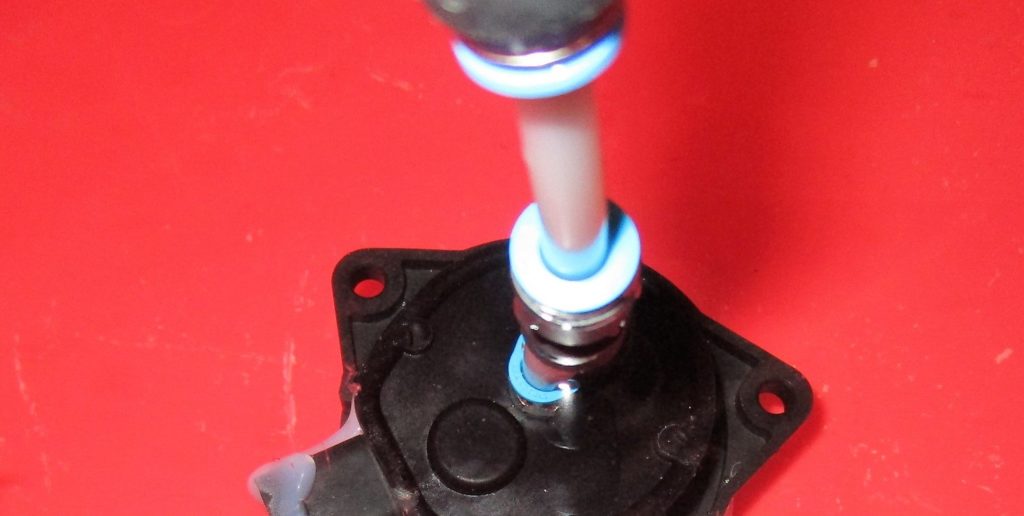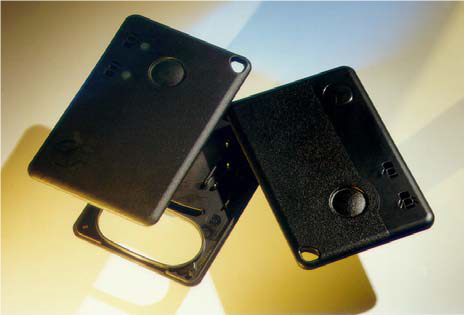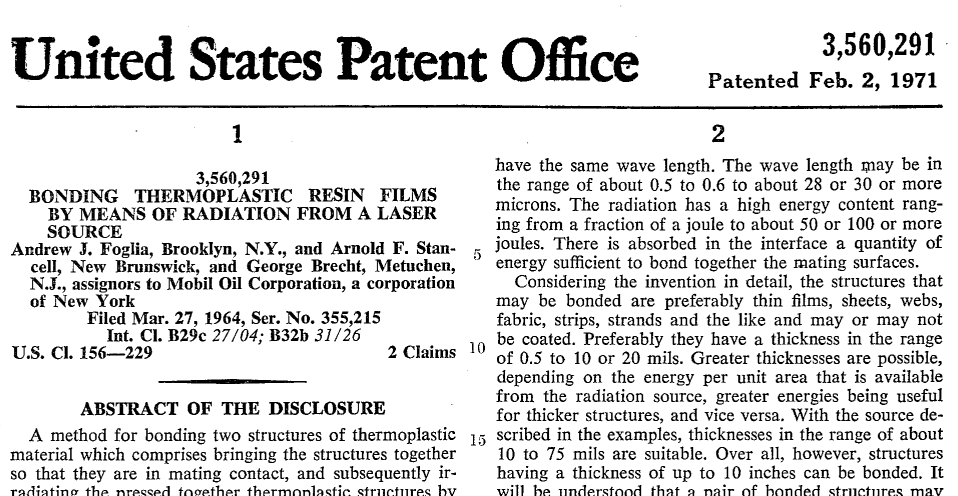
Patents for laser welding of plastics II
The development of laser welding of plastics represents a fascinating chapter in the history of materials processing. Although the patent application filed by Mobil Oil Corporation in 1964 can be regarded as an example of early considerations in this field, older patents prove that the use of radiation for joining…




